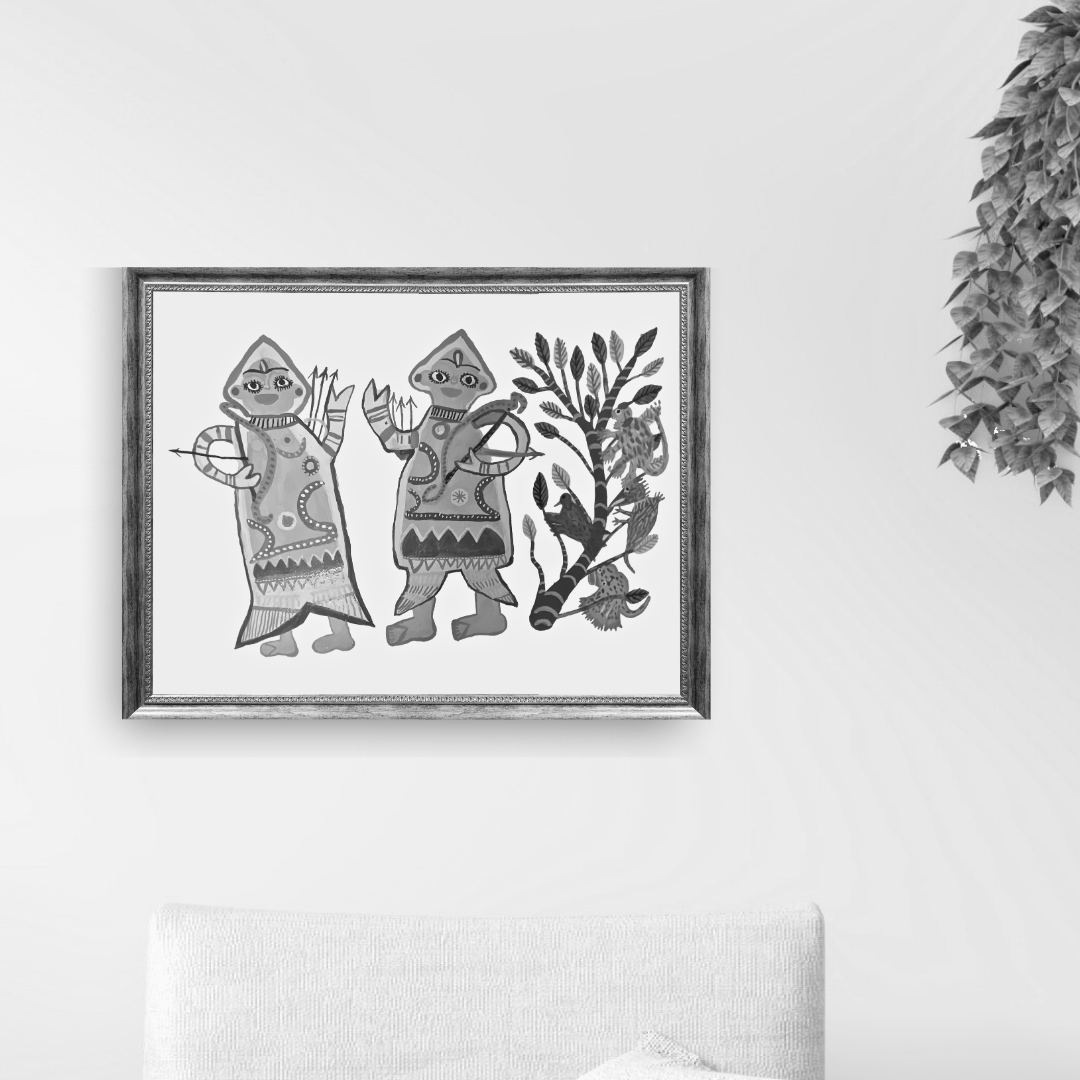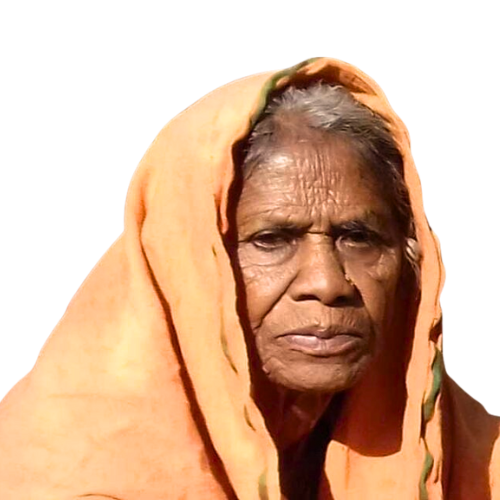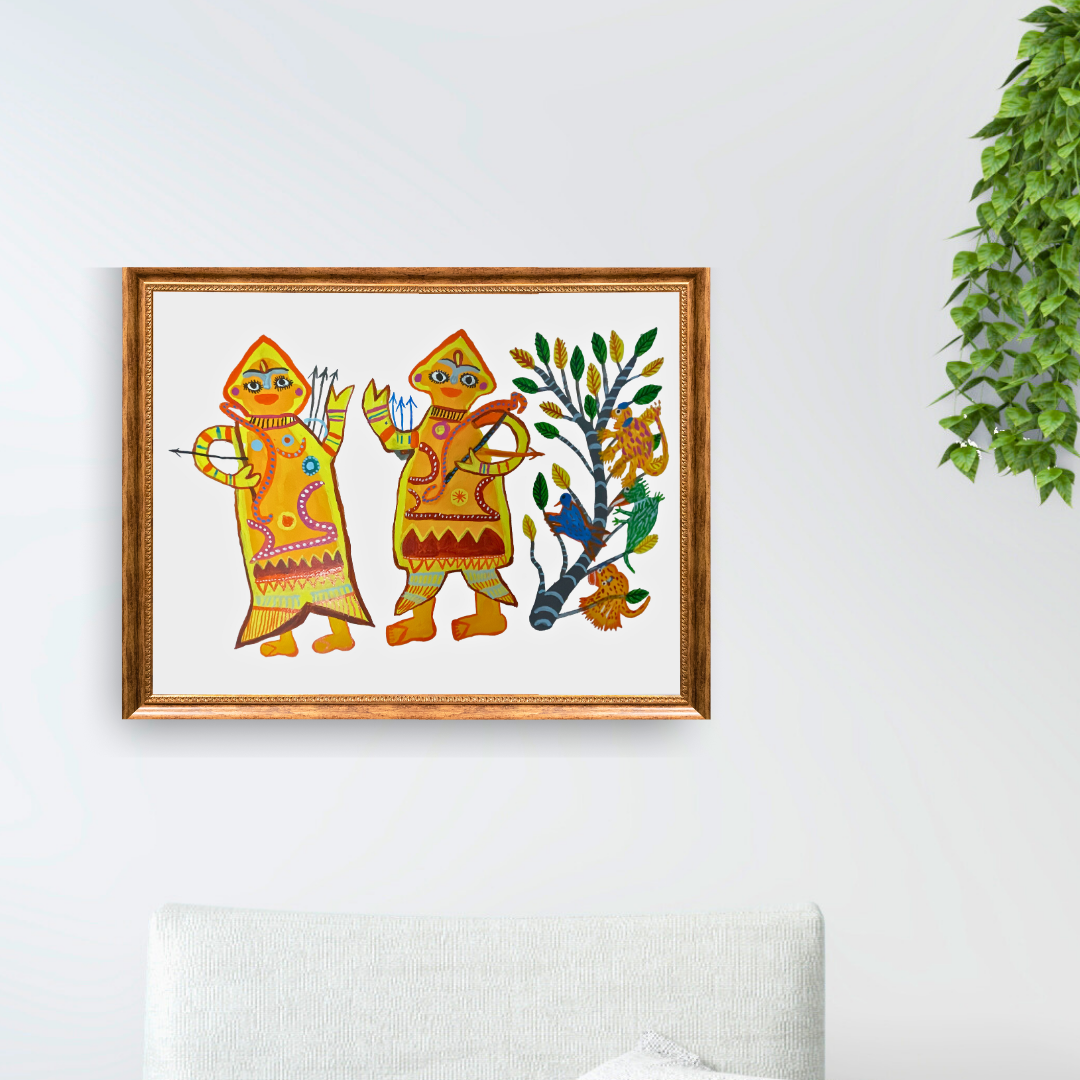
Lord Ram and Lord Laxman in Jungle
Jodhaiya Bai
Jodhaiya Bai Baiga, whose life is an inspiration not only to the women of the country but also to every aspiring artist, was one of India’s most respected tribal artists. Honoured with two prestigious awards, Jodhaiya Bai’s life represents an extraordinary journey from a labourer to a recipient of India’s fourth-highest civilian honour. Jodhaiya Bai Baiga was born in 1938 and lived in the Lorha village of Madhya Pradesh among the Baiga Tribe. Jodhaiya Bai lived in the forest with her tribal community and survived by selling firewood and cow dung. Creating art was a part of the routine in the tribe. However, unlike her fellow tribemates, she radically transformed her life at the age of 69 when she met Ashish Swami, an alumnus of Kala Bhavana, Santiniketan, setting an enduring example that it is never too late to pursue one’s passion. Ashish Swami, who ran a small studio in the nearby village of Lorha, became her mentor and encouraged her to develop her practice as a folk artist, marking the beginning of her historic artistic journey. From small paintings on paper, she progressed gradually to large canvases. Jodhaiya Bai’s art distinctly exhibits incredible use of colours and is rooted in the forests that surround her village. Many of her paintings are dedicated to Lord Shiva, and she enjoys painting the rituals and legends of the Baiga tribe. One of the elements that frequently appears in her paintings is Bageswar, the tiger god, who protects them and their lands from wild boars and wolves. But the life-giving Mahua tree is the star of several of her creations. Jodhaiya Bai’s art bridges traditional themes with contemporary concerns such as environmental destruction, industrialisation, and ecological loss, all expressed through the visual language of traditional Baiga motifs. Her paintings have been exhibited in Bhopal, Delhi, Milan and Paris and are part of the prestigious Crites collection. Jodhaiya Bai Baiga’s works have appeared at several auctions and have consistently achieved remarkable results in the art market. Notably, her painting Untitled realised a price of INR 48,00,000 at Pundole’s in March 2025. In recognition of her achievement, she was awarded with Nari Shakti Puraskar in 2020 and the Padma Shri in Arts 2023. Jodhaiya Bai’s extraordinary achievements stand as a living testament to the belief that it is never too late in life to realise one’s potential.
Description
The depiction of Ram and Laxman in a jungle resonates deeply with the Baiga way of life, reflecting their profound connection to the forest. For the Baiga, the forest is a sacred space, the abode of deities and spirits, where they offer prayers and sacrifices. The Baiga rely on the forest for sustenance, gathering fruits, vegetables, medicinal plants, and hunting, much like Ram and Laxman, who depended on the forest’s resources for survival. Additionally, the Baiga view the forest as a place of refuge during times of conflict or hardship, akin to how the forest provided sanctuary to Ram and Laxman during their exile. This shared reverence for the forest highlights the cultural harmony between the Baiga way of life and the narrative of the Ramayana, underscoring India’s collective heritage and its communities’ deep-rooted connection to nature.
What is Baiga painting?
What materials are used in the creation of your Baiga paintings?
How should I care for my Baiga painting?
Are the paintings framed or unframed?
Can I commission a custom Baiga painting?

Jodhaiya Bai
Artist headline not available.
Unique Practice
Paintings featuring the vivid colours and centred around nature, forest ecosystems, and wildlife.

